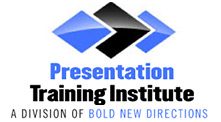Effective presentation skills are crucial for executive leaders, as they play a key role in shaping the organization’s vision, direction, and decision-making. When leaders present, they need to engage, inspire, and persuade their audience—whether it’s the board, employees, or external stakeholders. Here are some key tips for executives to enhance their presentation skills.
1. Know Your Audience
Understand the needs, interests, and expectations of the audience and tailor your message to address those needs. For example, a presentation to an investor will be more focused on financial growth, while a presentation to staff will be more focused on goals and vision for the organization.
2. Be Relevant
Address what matters most to them. Don’t assume that your audience shares the same level of understanding of the topic, and be prepared to adjust the content accordingly. Be ready to modify the content and delivery if needed to better align with their comprehension level. This might involve simplifying complex concepts, providing additional context or background information, or using relatable examples and analogies to illustrate key points. Remember that effective communication is a two-way street; by actively gauging your audience’s reactions and adjusting your approach accordingly, you can ensure that your message resonates and achieves maximum impact.
3. Set Clear Objectives
Every presentation should have a clearly defined purpose. Are you educating, persuading, inspiring, or selling? Clearly state what you want to achieve with your presentation and ensure your message is focused and aligned with your overall business goals.
4. Have a Strong Opening
Executive leaders usually only have a short period of time to capture their audience’s attention, so it is important to hook them right from the start with a strong opening. Begin with a compelling story, startling statistic, powerful quote, or provocative question. This engages the audience right away and builds anticipation about what you are going to present.
5. Use Storytelling to Engage
Managers have a tendency to relay data and statistics, but stories make these facts and numbers more relatable and easier to comprehend. Utilize customer success stories, real-life examples, or anecdotes that make your points come alive.
6. Incorporate Visuals
Visuals are a great way to reinforce key concepts. Use slides to complement your message, not overwhelm it. Keep slides simple, with one key point per slide, and avoid clutter. Use graphs and charts to illustrate data trends and make complex information easier to digest. Ensure they are clear and easy to read.
7. Use Effective Body Language and Vocal Variety
Stand confidently, use open gestures, and walk purposefully across the room. Your posture should reflect authority but still be welcoming. You should also avoid speaking in a monotone. Vary your pitch, pace, and tone to maintain interest and emphasize key points.
